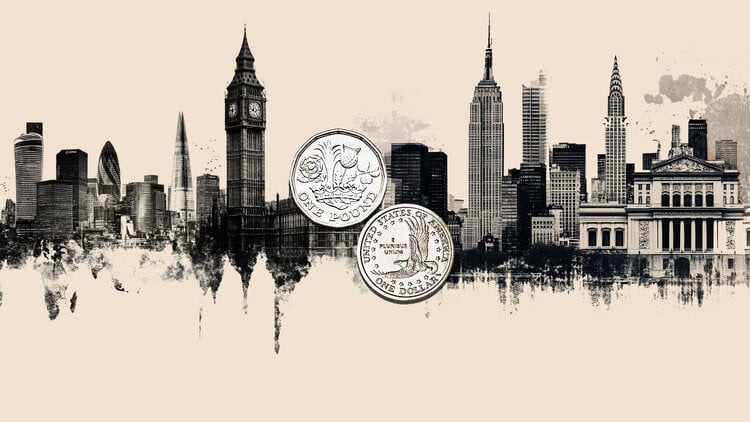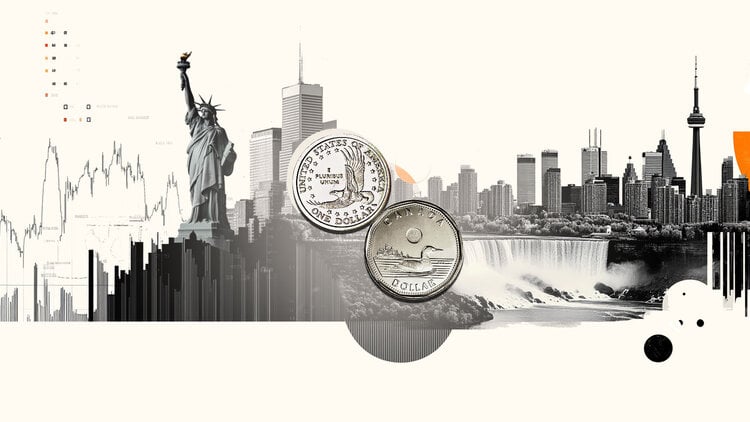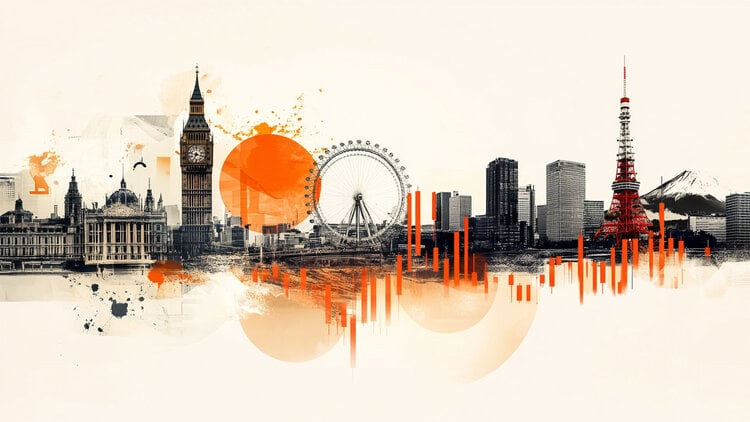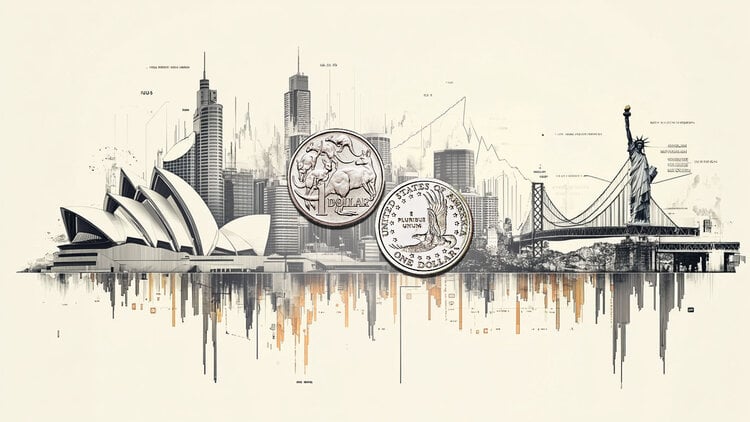The second consecutive drop in Gross Domestic Product (GDP ) quarterly United States characterizing the so-called technical recession, tends to reinforce the view that the Federal Reserve will be less aggressive in the country’s interest rate hike cycle, according to experts.
Between April and June, the US economy retreated 0.9% compared to the same period in 2021, according to data released this Thursday (28). Although an official recession has not been declared, the market is increasingly betting that the country’s economy will contract, especially in 2023, which tends to change the country’s stance. Federal Reserve in the fight against inflation.
As a result, the quarterly GDP ended up having a positive impact on the market, even though it was lower than expected, since the higher the fees the worse is the scenario of investments .
Performance in the quarter
The quarterly result reflects a combination of lower-than-expected readings for both personal consumption and investments, indicating an impact from inflation – the biggest in over 40 years – on the economy, say economists from Genial Investimentos in a report.
“The decline in the second quarter mainly reflected the negative results in domestic private investment, in federal and local government spending and in the consumption of goods, with emphasis on the consumption of non-durable goods. On the other hand, spending on services and exports advanced in the second quarter”, says the text, noting that imports slow down, helping the country’s trade balance.
In general, the market evaluated that the GDP came worse than expected, according to the chief economist at Inv Rodrigo Natali. The market’s expectation was not a retreat, but a growth of 0.5%.
“There’s been a lot of talk trying to change the definition of what a recession is, but in the traditional way, the United States is already in a recession”, emphasizes Natali.
In his view, the country’s economy has been held back by strong consumption data and job but the first one has been decelerating quarter by quarter, and may have a negative result in the next quarter.
“The general consensus is really that the number was worse, there was a large inventory burn, but many people are still optimistic on the consumption and employment side. But the scenario will eventually hit employment, and the economy is already feeling perhaps the rise in longer interest rates, which have been rising for six months. The Fed’s is more recent,” she says.
Raone Costa, chief economist at Alphatree Capital, considers that even though it fell short of expectations, the result was not so surprising because GDP preview indicators had already signaled a drop, but with the market doubting that it would actually occur.
“The consumption part is still growing, even if less than before, and the entire price part is still very strong. The surprise was actually that the real growth of the economy was a little lower, but the total exposure in terms of money was similar to what was expected. Inventories and residential investments that pulled down”, he evaluates.
Even with two consecutive quarterly declines, he says that the country’s economic activity does not show signs of a “prolonged and widespread slump”, part of the official definition of recession in the country, with a strong job market.
The scenario is one of “ambiguous signals” about the US economy, in the view of Suno’s chief economist Gustavo Sung. On the one hand, consumption and employment numbers remain positive, but investments are already starting to fall.
“Even with the drop in GDP, strong job creation, unemployment close to full employment and the increase in consumption by households, demonstrate that the US economy would not be in a recessionary spiral, but in a course correction after the Covid crisis. -19”, says in report.
perspectives
Even with a drop in GDP and a recession technically, Rico Rachel de Sá’s chief economist does not expect the US economy to enter a period of strong contraction and crisis, as in 2008. The reasons, according to her, are the robustness of the job market, levels of positive savings and a better financial situation than in 2008.
“Thus, we do not expect the technical recession scenario to last, projecting growth of 1.6% for the American economy this year”, he says.
The Genail team, on the other hand, assesses that “this result corroborates our assessment that the American economy should enter recession to combat the high level of prices, which can be aggravated by negative shocks arising from the crisis in Europe and the zero tolerance policy Covid -19 in China”.
Débora Nogueira, chief economist at Tenax Capital, considers that the “rock of the economy”, the consumption of services, is still showing positive signs, and therefore does not expect a new contraction in the third quarter.
“The other components of demand are decelerating more quickly, notably investment and consumption of goods. This time, we had a positive contribution in net exports, but the evolution of the global scenario suggests that this pillar will also collapse”, he points out.
“GDP is often heavily revised, so firm conclusions need a wider range of indicators. There is some information here that confirms a deceleration in demand, notably in the consumption of goods and investments, but this does not alleviate the scenario for monetary policy, after all we continue to observe strong labor market indicators, and these are more reliable when we think about the state of the economy in real time,” he says.
Natali says that the market saw the result with good eyes, even though it was lower than expected, as investors believe that “lower interest rates will be needed to fight inflation. But it is difficult to reach that conclusion yet given that inflation is still far above the normal and expected level. Powell said he thinks inflation is going to be 2.5% next year, but inflation data keeps coming in either consensus or worse.”
“The market is celebrating that the economy is worse, but that does not necessarily mean that inflation will fall, it may be getting closer and closer to stagflation, given that we are only seeing record numbers, which we have not seen in 20, 40 years. “, it says.
Rico’s economist assesses that any slowdown in the US economy tends to impact the entire world, including Brazil. There is also a high probability of a global recession, increasing market volatility and the “chance of contagion” in Brazil.
Even so, Rachel de Sá expects the Brazilian economy to grow 2.2% in 2022, “driven especially by the resumption of the service sector still in the wake of the end of the pandemic, by the improvement of the job market and driven by the price of commodities”.
The trend is that if the Fed really reassesss the bullish cycle and makes smaller hikes, the dollar weakens, allowing an appreciation of both the real and the Ibovespa .
“This result is an indication that some sectors of the US economy are already decelerating, which could ease inflation and reduce the pace of monetary tightening by the Fed,” says Sung.
Morgado, from Nexgen Capital, points out that Powell “did not rule out a new 0.75 pp rise, but hinted that this would be atypical, indicating that new highs must be of a smaller magnitude, even to expect them to have an impact on the economy, and we’ve already seen that in the second quarter.”
As a result, GDP “gives the prospect that the Fed may not be able to raise interest rates too quickly in the future, as the economy has entered a technical recession”.
Source: CNN Brasil
I am Sophia william, author of World Stock Market. I have a degree in journalism from the University of Missouri and I have worked as a reporter for several news websites. I have a passion for writing and informing people about the latest news and events happening in the world. I strive to be accurate and unbiased in my reporting, and I hope to provide readers with valuable information that they can use to make informed decisions.







